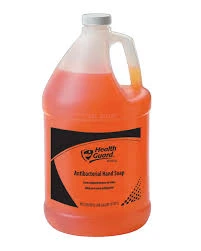oit isothiazolinone
Understanding OIT The Role of Oit Isothiazolinone in Modern Applications
Oit isothiazolinone, commonly referred to as OIT, is a member of the isothiazolinone family, a group of potent biocides primarily used to prevent microbial growth in various industrial and consumer products. Its chemical properties allow it to be effective against a wide range of fungi, bacteria, and algae, making it an invaluable ingredient across multiple industries, including cosmetics, pharmaceuticals, and construction materials.
Chemical Composition and Mechanism of Action
OIT, or 2-Octyl-2H-isothiazol-3-one, is an organic compound known for its antifungal and antibacterial properties. As a biocide, OIT works by disrupting the cell membrane of microbes, leading to cell lysis and ultimately the death of the microorganism. The compound's unique structure contributes to its effectiveness by ensuring that it can bind to key components within the cells of these microbes, inhibiting their growth and proliferation.
Applications of OIT
The versatility of OIT makes it a critical component in numerous applications. Traditionally, it is widely used in the formulation of paints and coatings, where it serves to prevent the growth of mold and mildew that can occur in damp environments. This is particularly important in regions with high humidity, where buildings and surfaces are prone to fungal infestations that can compromise both aesthetics and structural integrity.
Moreover, OIT is increasingly being utilized in the personal care industry. It is found in products like shampoos, lotions, and other cosmetics due to its ability to extend the shelf life of these products by preventing microbial contamination. The inclusion of OIT in these formulations not only enhances product safety but also ensures that consumers receive products that maintain their quality over time.
oit isothiazolinone

In the realm of pharmaceuticals, OIT is employed as a preservative in various formulations to inhibit microbial growth. This is crucial for ensuring the efficacy and safety of medications, especially those that could be compromised by bacterial or fungal contamination.
Safety and Environmental Concerns
Despite its effectiveness, the use of OIT is not without controversy. There are growing concerns regarding its potential health impacts, particularly with long-term exposure. Studies have shown that certain isothiazolinones, including OIT, can cause skin sensitization and allergic reactions. This has prompted regulatory bodies in various regions to scrutinize its use in cosmetic and personal care products. Consumers are becoming increasingly aware of the components in their products, driving the demand for safer alternatives and prompting manufacturers to reformulate their products to exclude potentially harmful chemicals.
Environmental implications are another significant concern. Research indicates that isothiazolinones can be toxic to aquatic life, raising alarm about their impact on marine ecosystems. As a result, there is a concerted push towards minimizing the environmental footprint of biocides, including OIT. Manufacturers are encouraged to explore more sustainable practices and alternatives that do not pose risks to human health or the environment.
Conclusion
In summary, OIT isothiazolinone plays a vital role in various industries, with its effective biocidal properties making it a staple in products ranging from paints to personal care items. However, the associated health and environmental concerns necessitate a balanced approach to its use. As industries move towards more sustainable and safer practices, the future of OIT usage will likely involve continued innovation and reformulation efforts. Stakeholders across the spectrum—including manufacturers, regulatory bodies, and consumers—must engage in ongoing dialogue to assess the benefits and risks associated with OIT, ensuring that its application maximizes safety while minimizing environmental impacts. Ultimately, finding a pragmatic balance will be crucial in navigating the future of biocide use in our increasingly regulated world.
-
2 Phosphonobutane 1 2 4 Tricarboxylic Acid (PBTCA) – Superior Scale InhibitorNewsSep.01,2025
-
2 Phosphonobutane 1,2,4 Tricarboxylic Acid (PBTCA): Superior Scale & Corrosion InhibitorNewsAug.31,2025
-
Dodecyldimethylbenzylammonium Chloride: High-Purity DisinfectantNewsAug.30,2025
-
2-Phosphonobutane-1,2,4-Tricarboxylic Acid: Scale & CorrosionNewsAug.29,2025
-
Premium Isothiazolinones | Broad-Spectrum Biocidal SolutionsNewsAug.28,2025
-
LK-319 Special Scale And Corrosion Inhibitor For Steel Plants: Advanced Solutions for Industrial Water SystemsNewsAug.22,2025





